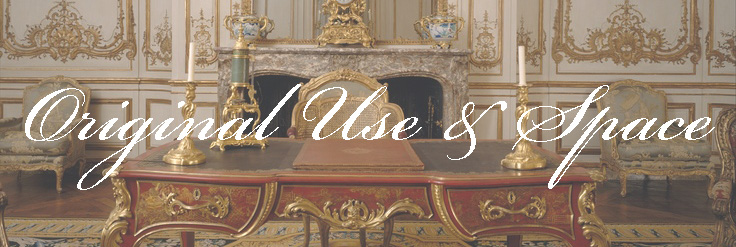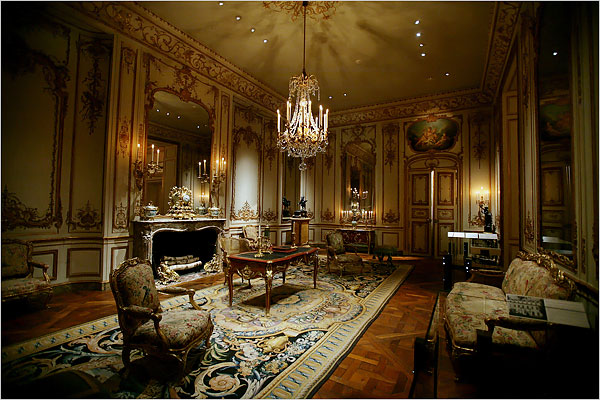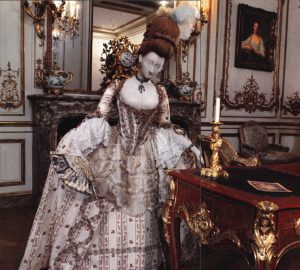Relit Varengeville Room
I have illustrated how the lighting conditions at various times of day interact with the room, people, and furniture in the Varengeville Room, including the mirrors and gilded accents like the desk and boiseries. The Wrightsman Galleries for the French Decorative Arts introduction states that the 21st century renovations to the galleries included dimmable lighting in the period rooms in order to give more of a semblance of the actual lighting conditions in these rooms. The candlesticks now have flickering bulbs, lights were added in the uprights, and the sconces were moved closer to the mirrors in an attempt to achieve more of a historically accurate effect of candlelight in such a highly ornamented space. However, the quality and authenticity of the lighting is still extremely poor. Digitally, I have created the effects of sunlight and candlelight in the Varengeville Room to show how differently the room would have looked during the day and at night without the artifice of the Galleries’ lighting.
Photograph of The Varengeville Room (ca. 1736–52, with later additions) in the Wrighstman Galleries at the Metropolitan Museum of Art showing the current lighting conditions.
In addition to showcasing lighting at different times of the day, I have attempted to show what activities would have taken place in a private space such as the Varengeville Room, utilizing Madame de Pompadour and her Oeben table as my primary subjects. Emma and Eugenie focused on the gendered uses of desks, specifically the Oeben mechanical table commissioned by Madame de Pompadour and its multi-functions. Rather than seeing the room itself without any life in it, these recreated images explore the connection between furniture and their users in the space. These pieces of furniture and the rooms they existed in were “implicated in the domestic and social dramas of love affairs (especially in clandestine letter writing), in the confiding of secrets (usually between women), and in the artifice of self-presentation (such as la toilette)” (Sargentson, 207). Collaborating with Emma who put Madame de Pompadour at her Oeben table into my resized room, we were able to illustrate the overall intimacy of sitting at and using one of these highly personalized pieces of furniture in a smaller, cozier space. The viewer now gains entry into a highly private moment and the juxtaposition of its natural beauty enhanced by the candlelight and the artifice of extravagant gilding and costume.
Left: “The Levée- The Assiduous Admirer.” The Costume Institute’s “Dangerous Liaisons” exhibit at the Metropolitan Museum of Art (2004).
Right: “The Withdrawing Room – A Helpful Valet.” The Costume Institute’s “Dangerous Liaisons” exhibit at the Metropolitan Museum of Art (2004). Photograph of Costume Institute’s period garment in the Varengeville Room.
Not only have I chosen to focus on the lighting at two different times of day in the Varengeville Room, but I relit the rooms with Madame de Pompadour in them performing her gender and time sensitive activities such as la toilette and letter-writing. The Met Costume Institute’s “Dangerous Liaisons” exhibition from 2004 allowed visitors to see how these spaces would have been used and what the relationship of people’s garments and body language were to the physical space they were a part of. Unfortunately, this exhibit is no longer on view, and the theatrics that took place in these rooms are left up to our imagination. Here, this experience is digitally recreated.
Click here to see the Varengeville Room during the day…
Text by Alex Bass
Pages
practice



